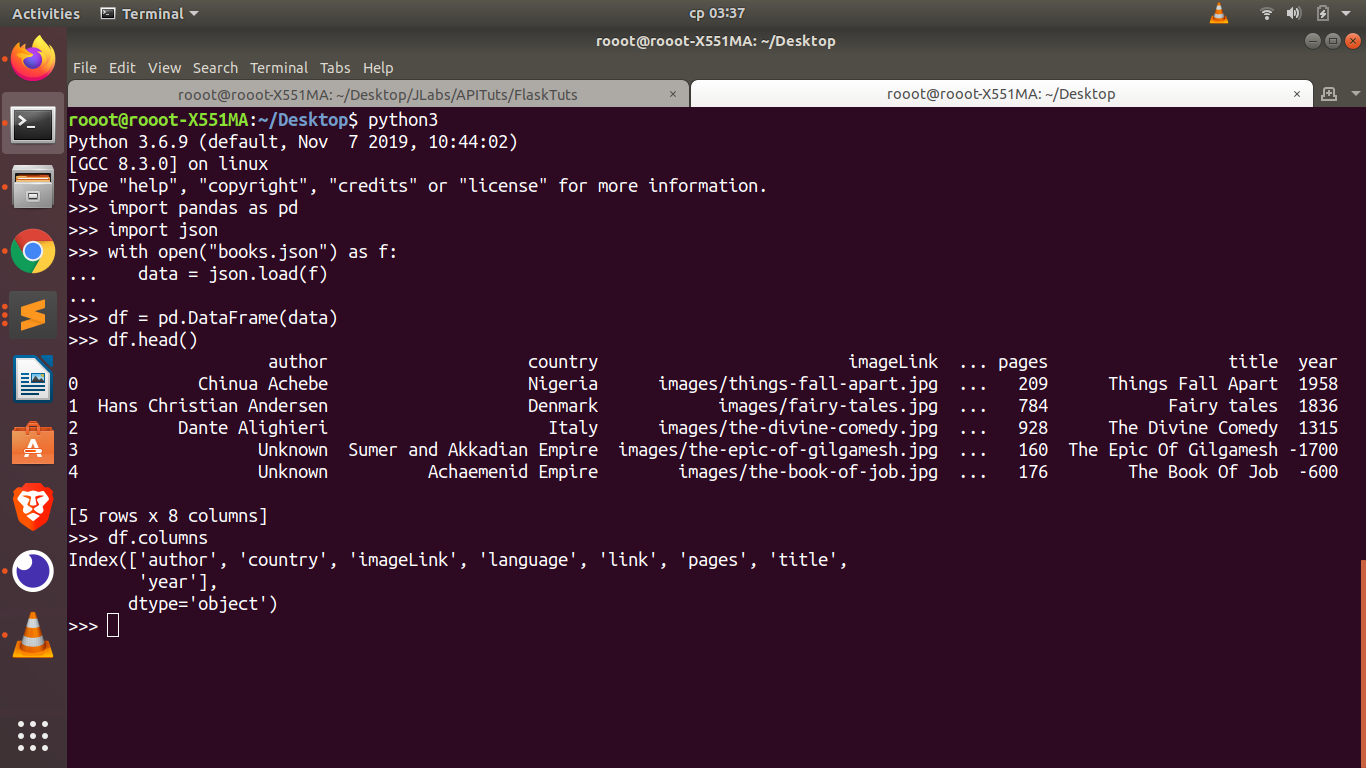
It’s like trying to fit a square peg in a round hole-you need a buzzsaw and parental supervision.
Python json how to#
dumps ( elf ) TypeError: Object of type 'Elf' is not JSON serializableĪlthough the json module can handle most built-in Python types, it doesn’t understand how to encode customized data types by default. I don’t know about you, but when I run the script interactively again, I get the following results: Yeah, yeah, your implementation is better, but the point is, you can now manipulate the JSON data as a normal Python object! append ( str ( user )) max_users = " and ". users = for user, num_complete in top_users : if num_complete < max_complete : break users. max_complete = top_users # Create a list of all users who have completed # the maximum number of TODOs. items (), key = lambda x : x, reverse = True ) # Get the maximum number of complete TODOs. todos_by_user ] = 1 # Create a sorted list of (userId, num_complete) pairs. todos_by_user ] += 1 except KeyError : # This user has not been seen. for todo in todos : if todo : try : # Increment the existing user's count. # Map of userId to number of complete TODOs for that user todos_by_user = # Increment complete TODOs count for each user. Simple Python objects are translated to JSON according to a fairly intuitive conversion. There is also a dumps() method (pronounced as “dump-s”) for writing to a Python string. Accordingly, the json library exposes the dump() method for writing data to files. What happens after a computer processes lots of information? It needs to take a data dump. Think of it like this: encoding is for writing data to disk, while decoding is for reading data into memory. But in reality, all we’re talking about here is reading and writing. Naturally, deserialization is the reciprocal process of decoding data that has been stored or delivered in the JSON standard.ĭefinitely.

You may also hear the term marshaling, but that’s a whole other discussion.
Python json series#
This term refers to the transformation of data into a series of bytes (hence serial) to be stored or transmitted across a network. The process of encoding JSON is usually called serialization. Keep in mind, JSON isn’t the only format available for this kind of work, but XML and YAML are probably the only other ones worth mentioning in the same breath. Yup, you got it! It’s nothing more than a standardized format the community uses to pass data around. So, we use JSON to store and exchange data? Have no fear, fellow Pythoneers and Pythonistas. Luckily, this is a pretty common task, and-as with most common tasks-Python makes it almost disgustingly easy. One way or another, you’re up to your neck in JSON, and you’ve got to Python your way out. Perhaps you’re gathering information through an API or storing your data in a document database. Chances are you’re here because you need to transport some data from here to there. Since its inception, JSON has quickly become the de facto standard for information exchange. Watch it together with the written tutorial to deepen your understanding: Working With JSON Data in Python Watch Now This tutorial has a related video course created by the Real Python team.


 0 kommentar(er)
0 kommentar(er)
